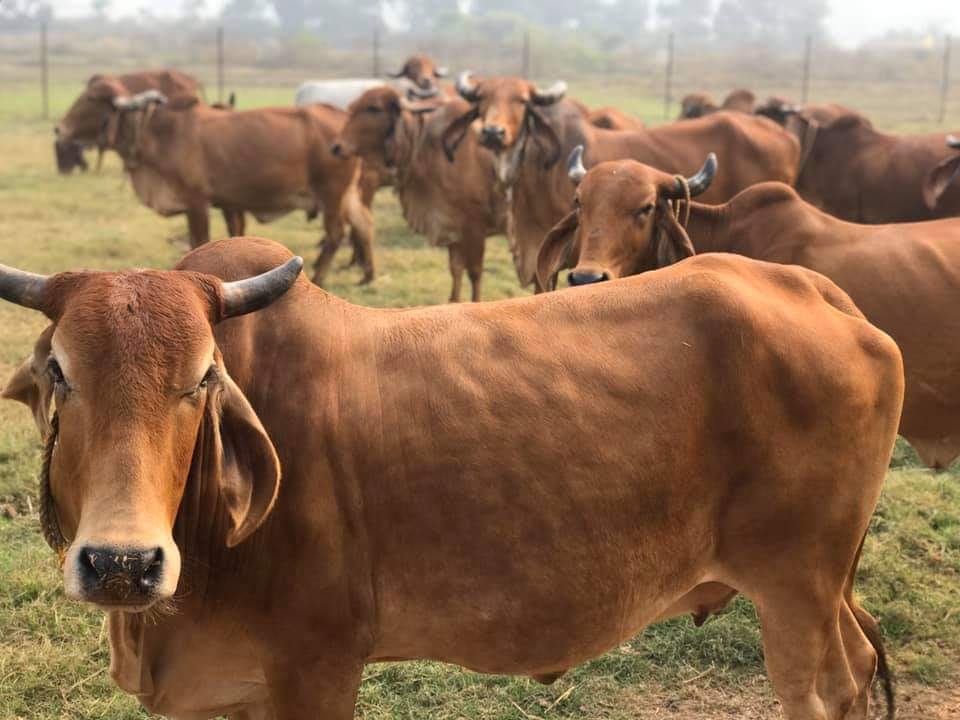NITRATE TOXICITY – A SERIOUS CONCERN FOR DAIRY FARMERS
DR. G. P. S. SETHI1, HARREET SINGH2
1Assistant Manager (Animal Husbandry), Milkfed
2Veterinary Officer (Punjab)
guranshsethi94@gmail.com
Nitrate is a common nitrogenous compound present in the rain water, feeds and fodders like oats, rye, millets, maize, sorghum, soyabean. Toxicity is primarily due to the oxidation of nitrate into nitrite which is the intermediate product of ammonia. Several outbreaks, due to consumption of fodder having excessive amount of nitrate, have been reported in bovines in Punjab. Each year Punjab losses several hundred crores to the menace of nitrate toxicity.
However, the point to ponder is how nitrate, which acts as a growth enhancer for protein requirement and present in various feeds attains such grave consequences.
Conditions that leads to nitrate toxicity
1. Fertilizers containing nitrate compounds like urea.
2. Water containing industrial waste, accumulated rain water, sewage water, etc.
3. Lack of minerals –Molybdenum, copper, iron, magnesium, and manganese are involved in the complete reduction of nitrate to ammonia, which avoids nitrite accumulation in the feeds and plants. Soils deficient in these lead to accumulation of nitrates in plants.
4. Plants – Oats, Maize, Millet, Rye, Sorghum are rich in Nitrate.
5. Species – Ruminants, are more susceptible to nitrate poisoning than single stomach animals.
6. Season – Winters favour the accumulation of nitrates because of excess moisture present in the environment and less sunlight.
7. Environment – Hot and humid weather leads to more accumulation of nitrate because plants grow faster and hence take more nitrate from the soil.
8. Part of the plant – Stem of the plants contain maximum amount of nitrate, followed by leaves. The seeds however do not contain nitrate.
9. Stage of growth – Young plants contain more nitarate while mature plants contain less nitrate.
10. Shady weather – Plants need photosynthesis for conversion of nitrate to amino acids and proteins. In places where plants are grown in shades or in cloudy weather, nitrate gets accumulated due to insufficient conversion of nitrate to amino acids
Symptoms:
On ingestion, nitrate gets converted to nitrite, which is 10 times more toxic than nitrate and when it enters blood stream it gets absorbed and start producing its toxic effects. Nitrite is capable of changing the normal oxygen transporting substance, hemoglobin present in RBC’s, into methemoglobin, a substance that cannot carry oxygen from the lungs to the tissues. When there is not sufficient oxygens available there is dyspnoea (Rapid and difficult breathing), frequent urination, dark to chocolate colored blood and cyanotic mucous membrane. In addition, it acts peripherraly on the arterial walls which results in vasodilation and circulatory failure, muscle tremors, collapse and death.
Diagnosis
Diagnosis is based on a history of ingestion of feed containing high levels of nitrates, clinical signs if present, primarily chocolate-brown discoloration of the mucous membrane and blood. All suspected feed and water should be submitted for chemical analysis along with necropsy samples. Various field tests performed for nitrate are presumptive only as they can only be confirmed by the analytical tests with diphenylamine blue test in 1% concentrated sulphuric acid in the laboratory. Nitrate test strips (dipsticks) are effective in determining nitrate values in water supplies and can be used to evaluate nitrate and nitrite content in serum, plasma, ocular fluid, and urine.
Treatment-
Nitrate toxicity is generally acute and rapidly fatal. Remove all the contaminated fodders when nitrate toxicity is suspected and replaced with feed containing large amount of grains and fibre. In addition, free access to clean drinking water should be provided to the animals. Seek guidance from a veterinarian immediately.
Management & prevention of Nitrate toxicity –
1. Avoid irrational use of fertilizers.
2. Monitor the suspected forages regularly for nitrate content, before feeding them.
3. Avoid feeding immature forages to the animals, as these contain higher concentration of nitrates.
4. Suspected forages such as corn should be harvested approximately one foot above the ground, since most of the nitrate accumulates in the lower portion of the stalk.
5. Gradually introduce suspect feeds into the diet and feed several times per day in small amounts rather than all at once.
6. The fodder should be cut in daylight rather than early morning or evening hours, so as to provide sufficient light for the process of photosynthesis.
7. Do not irrigate the fields with contaminated water.
8. Observe animals closely for signs of toxicity especially during the winter and monsoon months.



